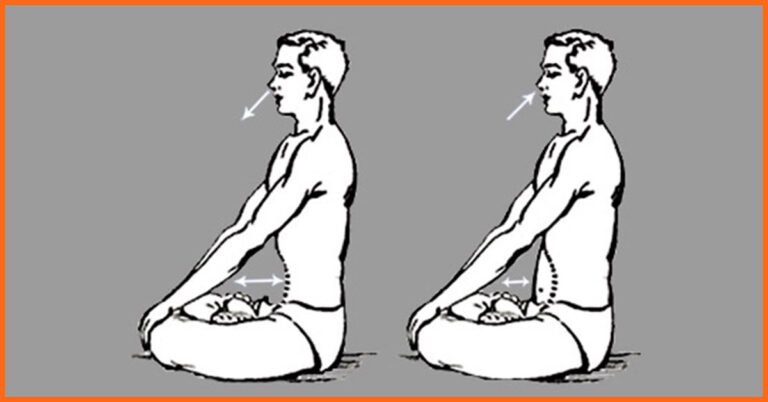Kapalbhati
kapalbhati : Types & Benefits
Kapalbhati is a part of Kriya Pranayama where one forcefully exhales rapidly in short bursts. yoga Practitioners claim that it helps in cleaning lungs and in exercising the abdominal muscles, an ideal way to reduce tummy fat.
The word ‘Kapalbhati’ means skull illumination. Yogis claim that the practice cleanses one’s mind and boosts a person’s appearance, also vouched for by modern science.
Today, research shows that the a part of the polluted air we breathe through our nostrils goes directly to the brain via the olfactory lobes (area responsible for sense of smell) and the rest goes to the lungs, supplying necessary oxygen to the blood.
While medical researchers show that pollutants are flushed most of the times by the immune system, the toxic particles in the brain go accumulate.
This has alarming implications for modern living, as the inhaled pollution from household and automobile smoke, dust and general industrial environment has the ability to directly affect the nervous system.
Statistics of increased cancer, dementia, Alzheimer’s disease rates have been attributed partly to the invasion of toxins in the brain.
There are, however, indications that some of these small particles can be flushed out by the cerebrospinal fluid which floods the brain. During episodes of dreams, this flushing mechanism is highly active.
Since these small particles enter the brain through the olfactory lobe, they can be flushed out by the forceful exhalation in Kapalbhati. This follows the principle of equivalence.
The forceful exhalation creates a venturi effect in the nasal passage, thereby creating a partial vacuum, sucking these particles out of the olfactory lobes. Natural designs are very efficient and take into account all paths and forces. Thus the forceful exhalation not only exercises the abdominal muscles, but also cleans the lungs and brain.

WHat are the types of Kapalbhati ?
1: Vatkrama Kapalbhati (air cleansing) This practice is the same as Kapalbhati Pranayama,
2: Vyutkrama Kapalbhati (sinus cleansing) Fill a bowl with pure warm water and add salt to the ratio of one teaspoon per half litre, ensuring the salt is well dissolved. Stand comfortably and bend over the bowl of water. Relax the whole body as much as possible in this position. Scoop the water up in the palm of the hand and sniff it in through the nostrils. Let the water flow down to the mouth and then expel it. Practice in this way several times. Dry the nostrils properly as described for jala neti. This completes the practice.
3: Sheetkrama Kapalbhati (mucous cleansing) Prepare the water as above. Stand comfortably and bend over the bowl of water. Take a mouthful of the warm saline water. Instead of swallowing it, however, push it up and expel it through the nose. Practise in this way several times. Dry the nostrils as described for jala neti. This completes the practice. Time of practice: The best time is early in the morning. However, vyutkrama and sheetkra1na kapalbhati may be performed at any time of the day except after meals. Duration: Vyutkrama and sheetkrama kapalbhati should take only a few minutes each and may be performed as a weekly routine.
WHat are the Contraindications of Kapalbhati ?
People who experience frequent nasal bleeding should not perform these practices.
WHat are the BENEFITS of Kapalbhati ?
Vyutkrama and sheetkrama kapalbhati ren1ove mucus* from the sinuses* and help to relax the facial muscles and nerves. Other effects, both physical and spiritual, are the same as for jala neti, but intensified.
Practice note: Before attempting vyutkrama and sheetkrama kapalbhati, the practitioner should be proficient in the practice of jala neti.
Note: The word kapal means ‘cranium’, forehead’ or frontal lobe of the brain’. Bhati means ‘light’ or ‘splendor’ and also ‘perception’ or ‘knowledge’.
To know more about Kapal bhati, please visit our Yoga Teacher Training courses in Bali.
Frequently asked question
What is Kapalbhati?
Kapalbhati is a part of Kriya Pranayama where one forcefully exhales rapidly in short bursts. yoga Practitioners claim that it helps in cleaning lungs and in exercising the abdominal muscles, an ideal way to reduce tummy fat.
The word ‘Kapalbhati’ means skull illumination. Yogis claim that the practice cleanses one’s mind and boosts a person’s appearance, also vouched for by modern science.
What are the types of Kapalbhati?
Types of Kapalbhati?
1- Vatkarma
2- Vyutkarma
3- Sheetkrama
What are the benefits of Kapalbhati?
Vyutkrama and sheetkrama kapalbhati ren1ove mucus* from the sinuses* and help to relax the facial muscles and nerves. Other effects, both physical and spiritual, are the same as for jala neti, but intensified.
Practice note: Before attempting vyutkrama and sheetkrama kapalbhati, the practitioner should be proficient in the practice of jala neti.
Note: The word kapal means ‘cranium’, forehead’ or frontal lobe of the brain’. Bhati means ‘light’ or ‘splendor’ and also ‘perception’ or ‘knowledge’.
More Yoga Links:
✔ 200 hour yoga teacher training in goa,India
✔ 200 Hour Yoga Teacher Training In Bali
✔ 200 hour yoga teacher training in Rishikesh,India
✔ 100 hour yoga teacher training in Rishikesh,India
✔ 100 hour yoga teacher training in goa,India
✔ 100 hour yoga teacher training in Bali
✔ Ashtanga teacher training in goa,India
✔ Vinyasa yoga teacher training in goa,India
✔ 100 hour yoga teacher training in Rishikesh,India
✔ yoga teacher training in Goa,India

